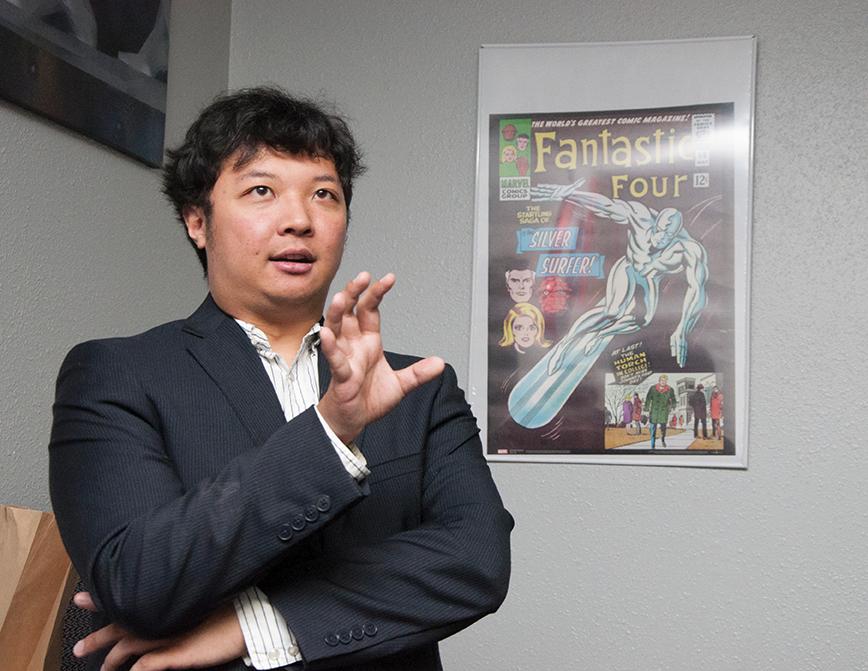Nerds assemble at Logan comic book store
When Nick Wan moved to Logan, he was disappointed to find there was no community science program. He responded by starting Logan Nerd Night.
Every third Friday of the month, science enthusiasts gather at Death Ray Comics to share research.
A Ph.D. student in psychology, Wan started the science outreach program based on similar events in San Francisco, where he used to live.
He had to find a venue first. After listening to suggestions and asking around, Trent Hunsacker, the owner of Death Ray Comics, offered to host his idea.
“Trent was very welcoming to the idea of hosting us here,” Wan said. “He’s a bit of a nerd himself. It seemed like the perfect fit.”
The $3 donation for admission goes toward paying rent for the venue. Wan hopes as Nerd Night grows in popularity and starts selling out, he can use the extra funds for other science programs.
Wan said a new event like this would sell out the first night in San Francisco because people would be curious, and then it would be harder to get people to show up a second time.
“But in Logan, you have to tell people,” he said. “You have to work hard to get the word out.”
Wan tries to bring in graduate student speakers from departments through email campaigns. He said they had 11 attendees the first night. At the second event last Friday, there were about a dozen. Wan hopes to reach 20.
Wan said he thinks the talks are a great opportunity to practice presenting research. In a conference or interview, a reputation and career is at stake, but it’s OK to mess up here, he said.
Each night features two talks based in science. Last Friday’s talks were on the zombie apocalypse and historical disasters.
Brady DeHart, also a Ph.D. in the psychology department, presented a data analysis of the game Humans vs. Zombies as a model for the zombie apocalypse.
“Let us begin with the facts,” he said. “A zombie apocalypse is inevitable.”
Humans vs. Zombies is played at USU and on campuses around the country. DeHart graphed data from the game of more than 45,000 participants, created an exponential decay model to fit the data, and concluded the rate of decay was too quick for the government to ever respond. He also found the numbers eventually leveled off.
“Basically, if you can make it five days, you’re good to go,” he said. “But we have no hope if our government can’t pass a budget.”
The best keys to survival are stocking up on food, ammo and calculus, he said.
DeHart was happy to present his findings when Wan asked him to speak at Nerd Night.
“I had this zombie data set and didn’t know what to do with it,” DeHart said.
Dr. Leslie Williams from the anthropology department discussed two of her case studies on historical disasters. Williams looks at how disasters shape human history through skeletal, historical and archeological data.
She analyzed the effects of climate change and humanity’s ability to adapt. A study links the “Little Ice Age,” a period of cold temperatures in medieval Europe from the 1300s to 1800s, to social instability and the witch hunts, she said.
Williams also looked at the Johnstown flood in 1889. More than 2,000 people were killed when a dam broke, the majority of whom were women and children. Her studies focused on why women and children were more vulnerable during disasters than men. She said the long skirts and fashions of the day hamper swimming abilities and may have contributed to the higher death toll.
Williams said she agreed to speak when Wan asked her because she believes outreach is important. It makes science more available to the community, other students and anyone interested in science.
She said it was nice to listen to DeHart’s presentation.
“It’s nice that you get to see what people are doing in other departments,” she said.
@BurnettMaile

